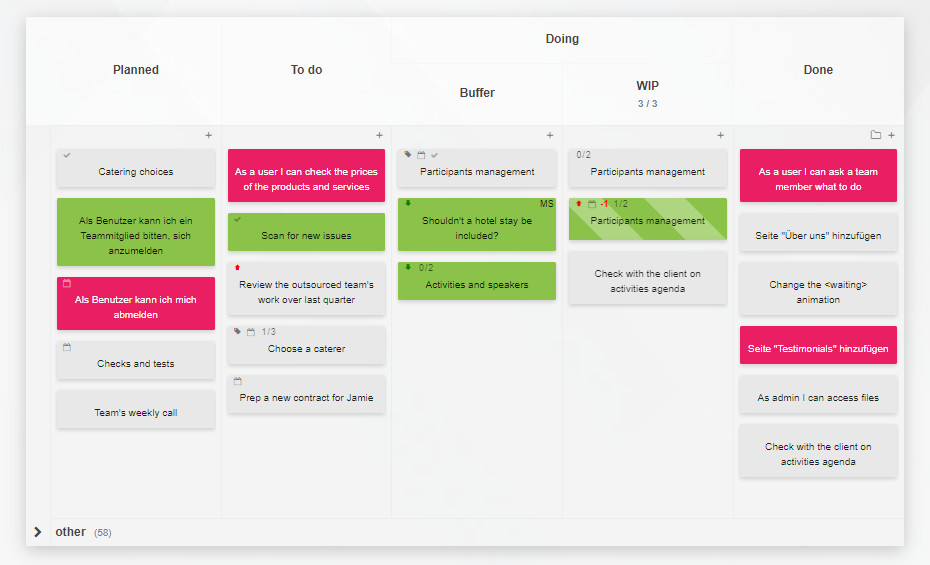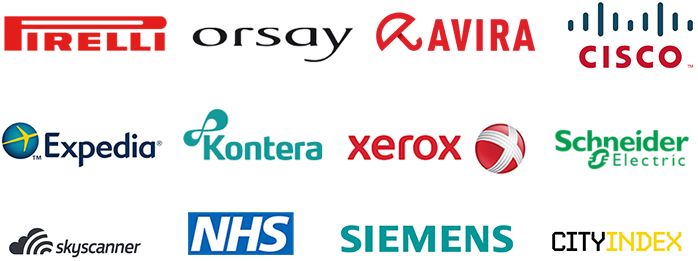
In a nutshell, Kanban is a system of managing work in a highly visual way, focused on limiting how many items you process at a time.
The Kanban method, helping teams manage their workflows effectively, is based on the principles of Just-In-Time (JIT) production, which emphasizes flexibility and responsiveness to changing customer needs. The goal is to help teams identify bottlenecks in their process and improve the workflow from start to finish.
The word Kanban derives from the Japanese word for signboard or billboard, referring to the visual signals used to manage production in factories and - much earlier - to Japanese shop signs, which advertised their services. In knowledge-based scenarios like software development or customer service, Kanban boards typically represent the flow of work from one stage to the next.
The Kanban boards are made of columns standing for different stages of work, e.g., from To do, to Done. Tasks or items of work are represented as Kanban cards, and you move them from one column to the next as the work progresses. The cards usually contain additional information, such as the work's description, the person responsible for it, its due date, difficulty level, priority, etc.

You can use Kanban for a wide range of workflows, from software development to marketing, since it adapts to the needs of any process. It allows you to visualize your team's workflow, identify blockers, and - importantly - make improvements to the process. By making work visible, your team can collaborate more effectively, easily prioritize tasks, and reduce the risk of burnout.
The key benefit of Kanban is the facilitation of work-in-progress (WIP) limits. By agreeing on a limitation in the number of tasks that can be in progress at any given time, you reduce the risk of overloading the flow and ensure that work processes in a timely manner. Started tasks need to be finished before new ones are started. Thanks to that, your team can deliver high-quality work without sacrificing speed or agility.
Also, Kanban boards let your team make changes to the workflow flexibly and incrementally. Instead of imposing a rigid process, it encourages you to experiment and improve the workflow as you go. It allows your team to adapt to changing circumstances and respond to varying customer needs quickly and effectively.
In short, using Kanban introduces the following advantages:
- Increases transparency and visibility of work progress
- Facilitates communication and collaboration among team members
- Promotes continuous improvement by allowing teams to adjust the process flow based on real-time data
- Encourages experimentation and innovation
- Reduces the lead time and improves delivery speed by eliminating waste and optimizing processes
Get started with Kanban today!
Kanban is easy to implement and can work for teams of any size. It's a flexible and effective project management method that can help you manage your workflow and deliver high-quality work in a predictable time and manner. Whether you're a software developer, researcher, writer, creator, banker, marketer - or work in any other field - Kanban can improve your work efficiency, making prioritization easier and bringing you closer to achieving your goals.
Try using Kanban Tool today and experience the benefits for yourself!



